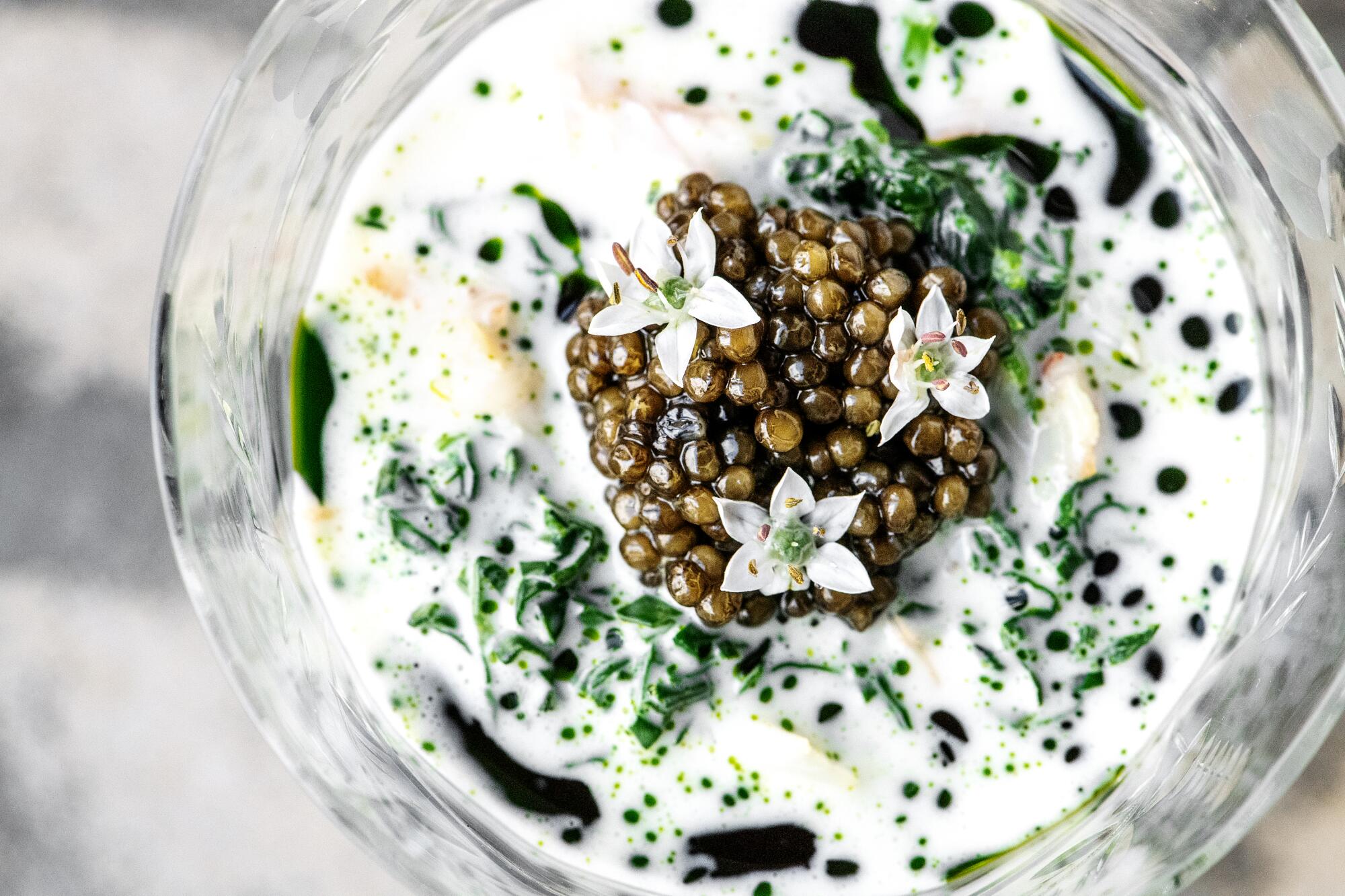
- Share via
Growing up in the San Gabriel Valley, Jon Yao remembers the delight he felt eating song shu yu, or “squirrel fish,” a showpiece dish defined as much by technique as playful illusion.
The recipe involves a perch or carp filleted and scored with crosshatch patterns that spike up during deep-frying. A veneer of sweet and sour sauce comes next; Yao recalls ketchup as a clutch ingredient that made its way into his parents’ Taiwanese American kitchen. Traditionally, the fish arrives at the table presented whole with its head and tail, though the puffed appearance of the center-stage fillet is said to resemble a bushy squirrel. Pine nuts scattered over the top often reinforce the impression; squirrels love pinecones, yes?
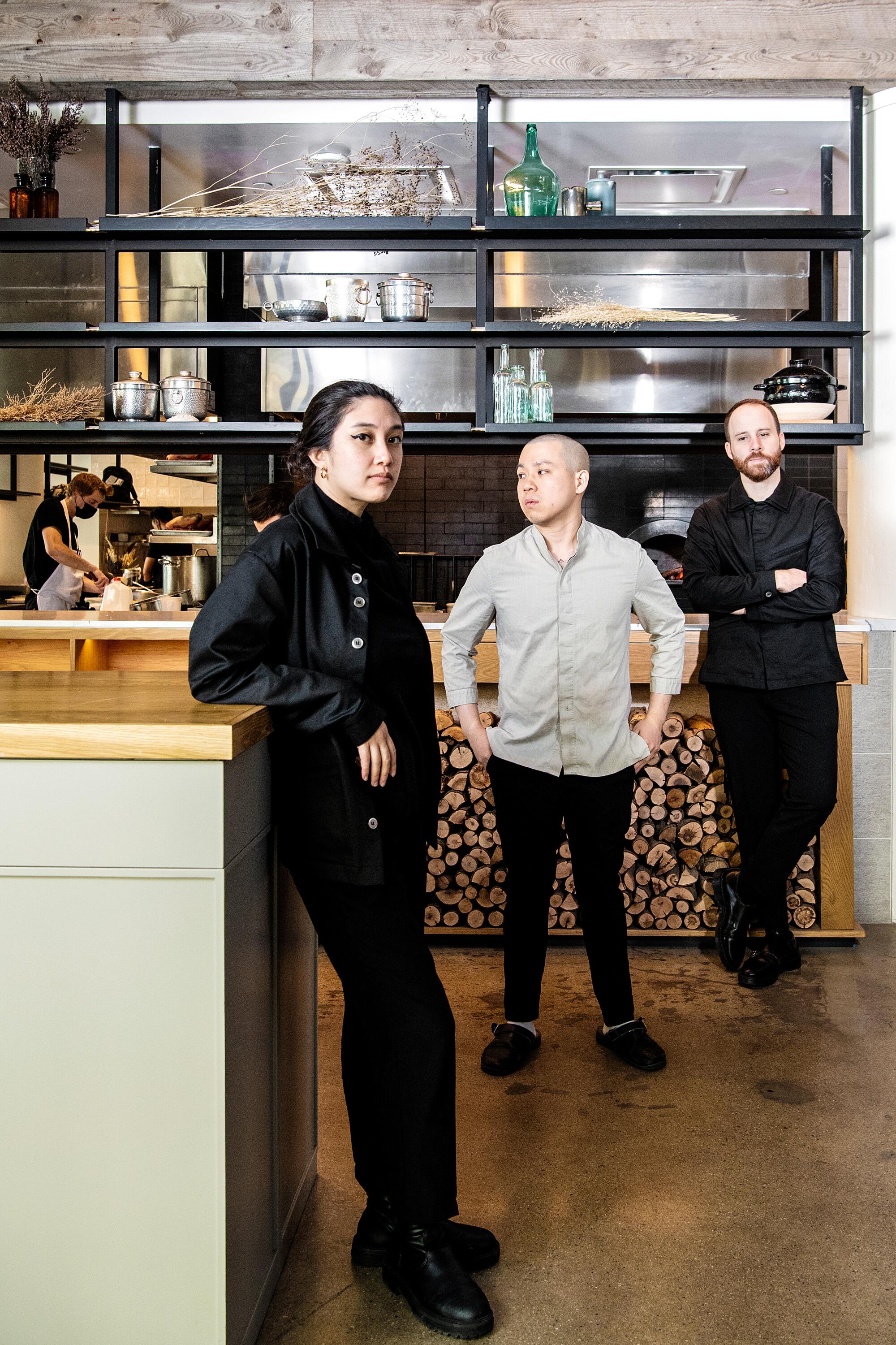
Yao was brainstorming new dishes for Kato, his once-tiny Sawtelle restaurant that has grown in every way possible since its move in February to the Arts District, and he wanted to invoke the flavors of song shu yu. But that memory had also entwined itself around another childhood favorite: his mother’s fish fragrant sauce, an aromatic base for meat or vegetable stir-fries potent with garlic, ginger and doubanjiang (Sichuan chile bean paste).
He grafted and morphed their essences into the seventh course of Kato’s current tasting menu, a capstone moment in a meal of 10 or so dishes. One squat and very fresh Hokkaido scallop sits in a shallow bowl. It’s sheathed in the thinnest batter and fried long enough to tease out its maximum sweetness. The exterior crackle yields to rich density; it may be gone in two bites but it’s enough for the brain to imprint the texture, to recall the impact against the teeth at will. Sparks of chile heat fly up from the sauce underneath, and precisely minced bits of green onion give the teeth something to crunch on. But mostly, the perfume of garlic and ginger join forces to flatter the scallop. If the notion of harmony could be assigned a definitive flavor combination, I’d nominate this dish for the honor.
Does the tangled halo of herbs, sliced Fresno chiles and cilantro buds atop the scallop resemble an exceptionally handsome squirrel’s nest? That’s probably overthinking things.
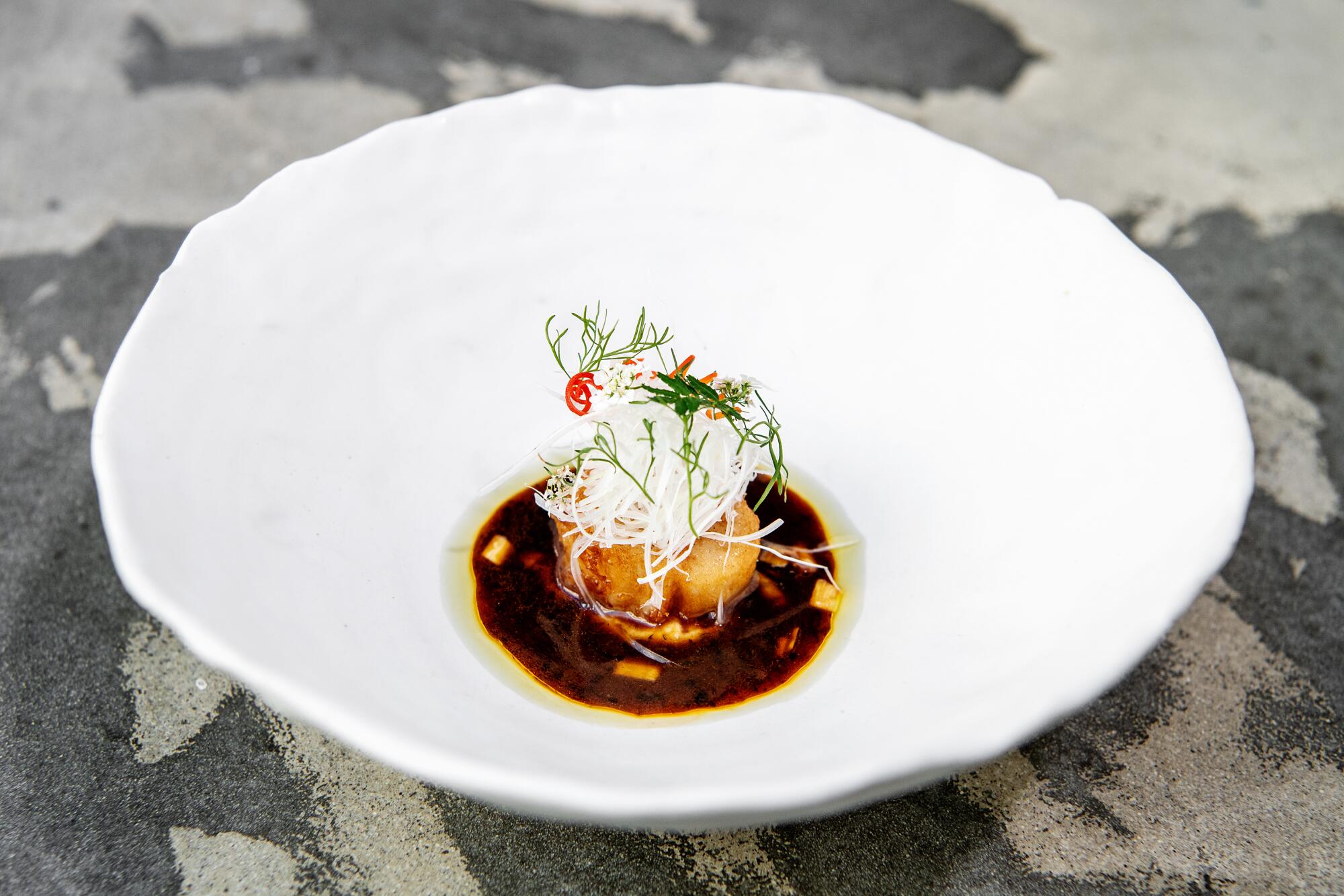
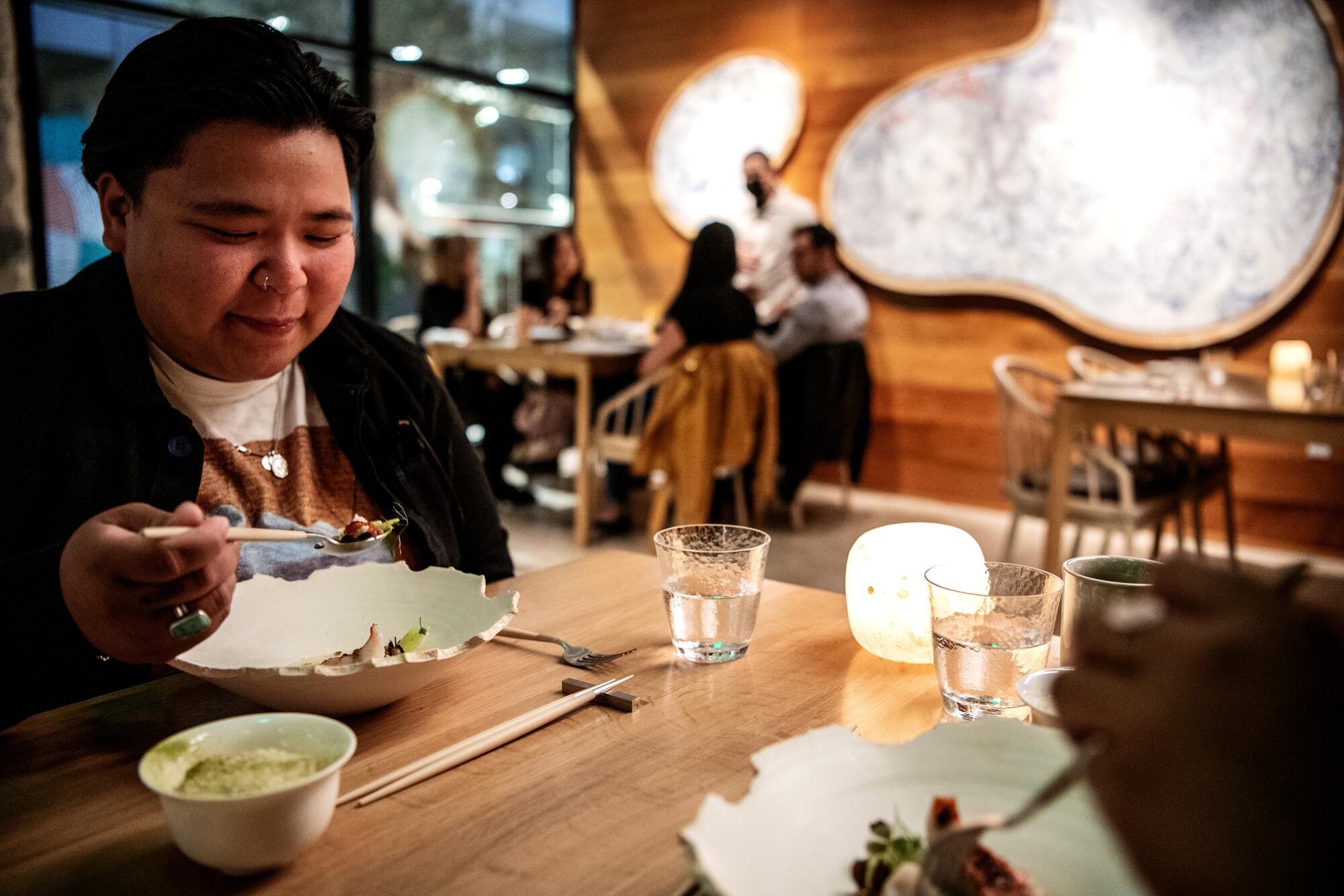
But a whirring mind comes with the excitement of dining at what might be called Kato 2.0, a stunning re-envisioning of what was already one of Los Angeles’ vital restaurants.
Layers of interpretation have always been present in Yao’s cooking. If you’re looking to parse the almost clinical dissection of nostalgia, the pride of identity and the redefinitions of luxury in his food, the intellectual fodder is there. If you want simply to savor a beautiful, thoughtful sequence of plates, he can make you feel nourished on many levels.
That became especially true around 2018, two years after Kato opened in a bare, snug space in the nook of a corner strip mall. At first, Yao was pulling ideas from Japanese, Korean and Vietnamese repertoires, as well as from his mother’s kitchen. He was not quite 25 then, and as he settled into himself as a chef, he felt more pulled to frame the cuisine of Taiwan; its food culture contains multitudes, including indigenous traditions and absorbed imprints from immigration and colonialist occupations (Spanish, Dutch, Chinese and Japanese) over the centuries.
He has never been overly dogmatic about the focus, but by choosing Taiwanese cuisine, he came into his greatness. For tasting menus, he condensed the soul of Taiwan’s beloved beef noodle soup into a viscous, chile-laced broth. He applied the triumvirate of three-cup chicken — soy sauce, sesame oil and rice wine — in elegant, basil-scented studies involving octopus, tuna or abalone.
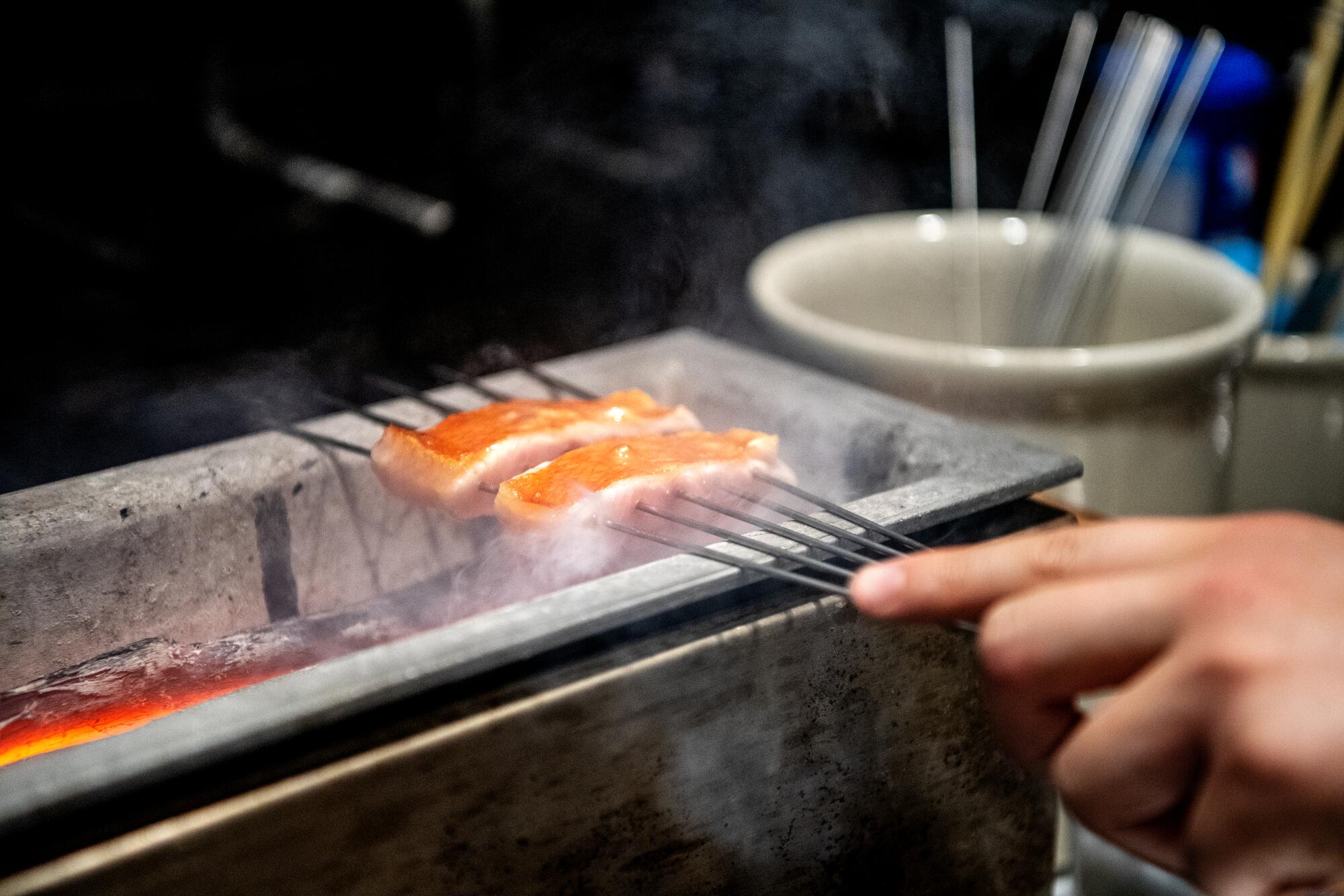
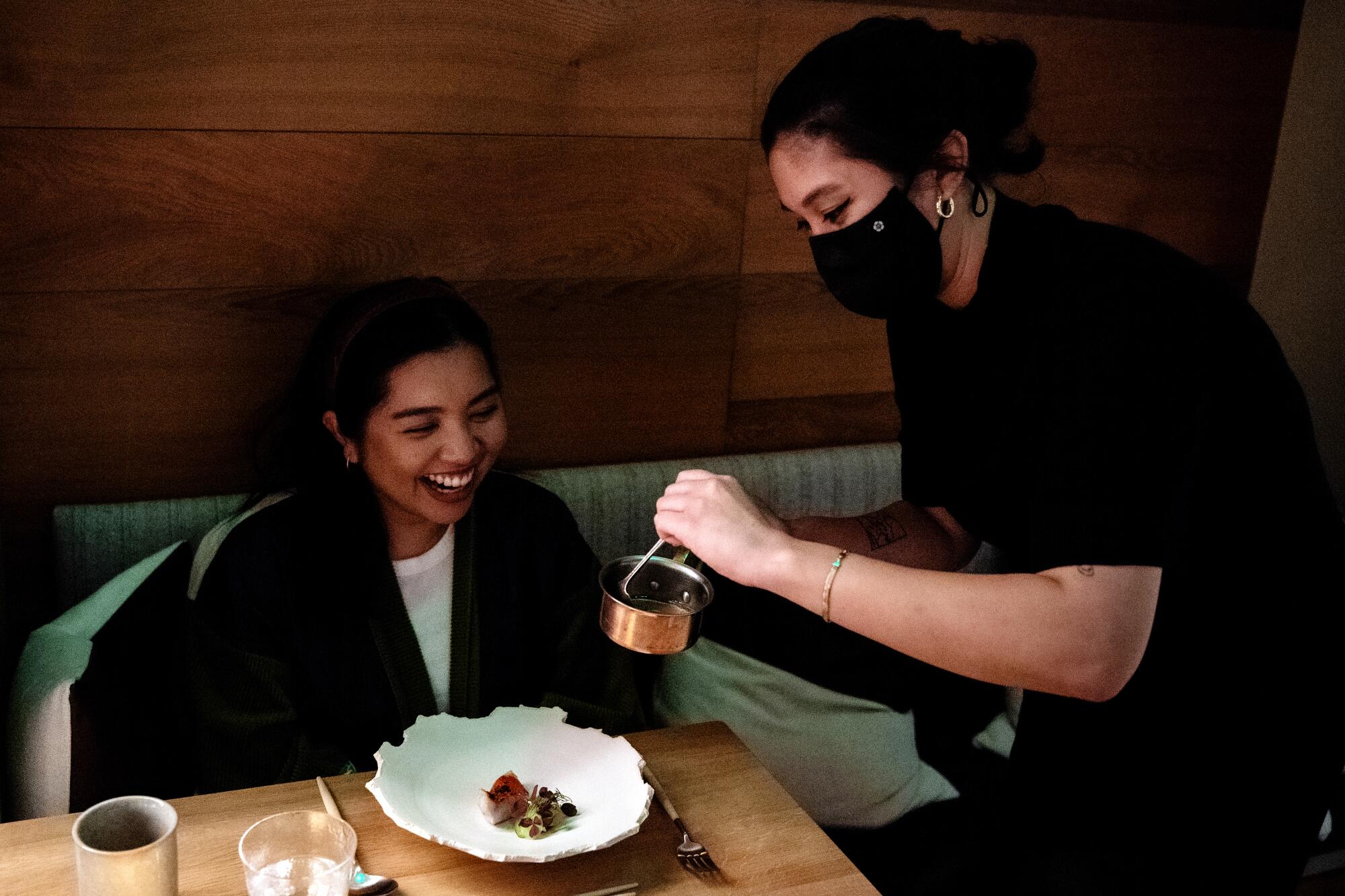
He riffed on custard-filled pineapple buns, steamed fish in clouds of ginger and scallion, and boba milk tea for dessert. The ambitions of Yao and his skeleton crew, the personal-narrative cooking and the dialed-back setting registered as purely Los Angeles. Kato earned lots of recognition. On The Times’ list of the 101 best restaurants in 2019, Patricia Escárcega and I ranked it No. 1.
Yet for all the deserved acclaim, an aura of anticipation always clung to the restaurant. A liquor license in the location wasn’t permissible; the team could stretch and dream only so far in the spare quarters. Yao and business partner Nikki Reginaldo scouted for the right new surroundings for years. Reginaldo would be dropping off a tapioca fritter draped with uni and you’d ask her how the search was going. “Still looking,” she’d say, a hopeful look in her eyes.
The fit came at last: The airy, wood-and-concrete-lined space in Row DTLA vacated by Melissa Perello’s short-lived M. Georgina. Dining-wise, the isolated Row complex stagnated during the COVID-19 pandemic. Kato’s arrival is a sure return to life.
If you ever visited the restaurant in Sawtelle, the expansiveness of Kato 2.0 can wallop your senses: So many knowledgeable servers on the floor. So many chefs in the open kitchen. Yao is ever-present near the wood-burning stove, head usually bent over a plate or huddling with a colleague. Reginaldo is everywhere in the dining room at once; I notice she makes a specific effort to describe the scallop over fish fragrant sauce at every table, mentioning that it might be her favorite dish.
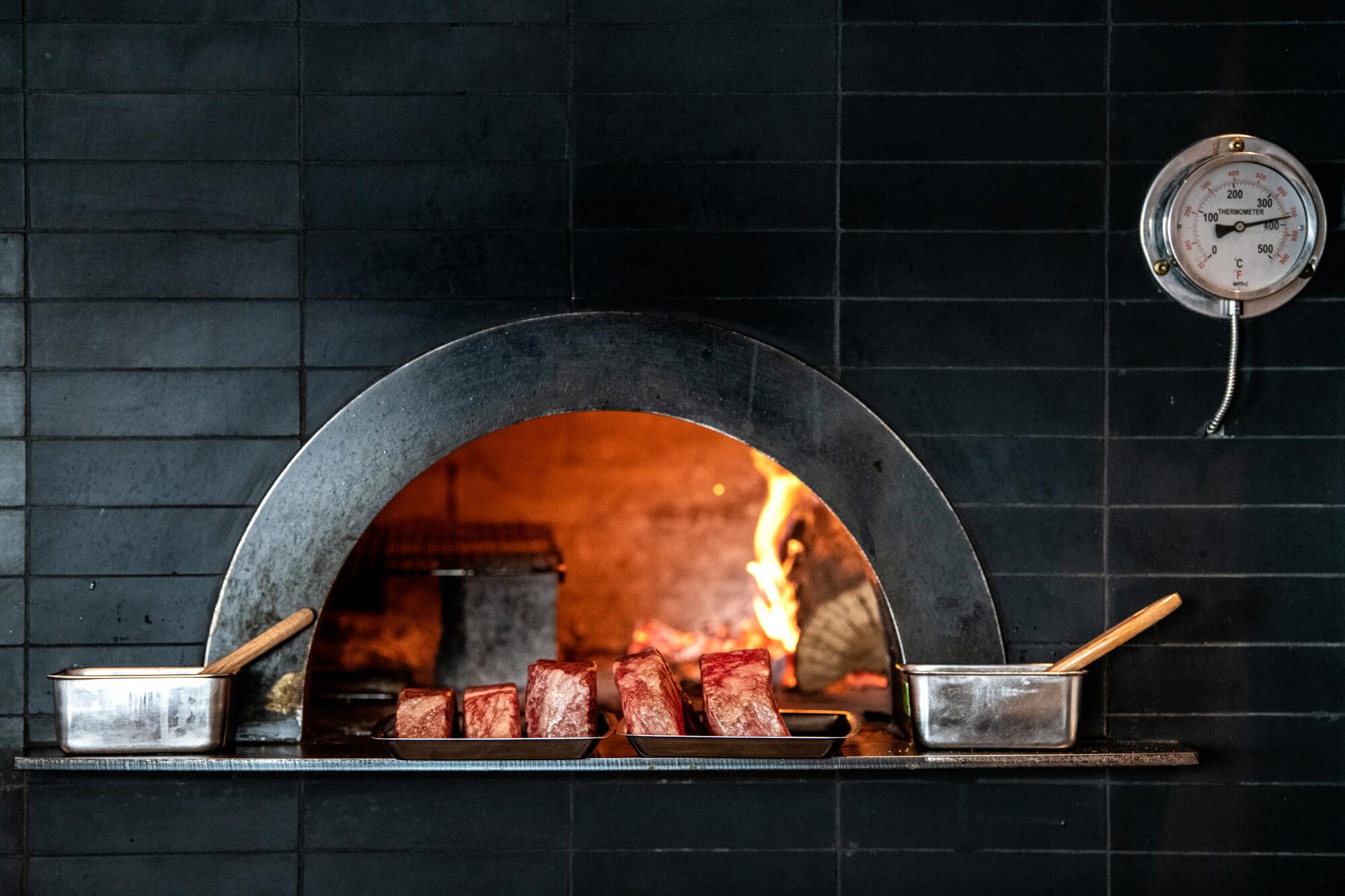
With much larger digs, a longer tasting menu and an overall grander vision comes a price hike: The cost is $225 per person, up from $150 before the move. If you’re celebrating a special occasion — if you want to experience a triumphant expression of upscale dining unique to Los Angeles — it is a worthy splurge.

With the expansion comes an all-in beverage program steered by new Kato partner Ryan Bailey. If you have any interest in cocktails, begin with one of bar director Austin Hennelly’s liquid riddles. They sound ridiculously complicated yet land so cleanly. Cognac, bourbon and rum with brown butter and boniato, two ingredients that nod to a dessert Yao served in the old space, transform into a clear milk punch that sits at the nexus of sweet and savory. “Bamboo,” a martini-like blend of sake and vermouth tinged with tomato brandy and soy, nicely readies the palate for the dinner ahead.
Beyond the 57-page wine list covering all regions and tier, and the wine pairings at two price levels ($125 and $175), Hennelly composes the most extraordinary nonalcoholic beverage flight I’ve tasted. He intersperses nonalcoholic cocktails — say, a refreshing blend of cucumber, bitter melon and white peony — with bottled juices of Sauvignon Blanc, Pinot Noir and other grapes from France, Germany and Austria. It stands alone as a wonderful coupling with the food, and it’s a revelation in contrasts and similarities side by side with wines.
Yao’s cuisine, amid the upgrades and beverage debuts and now supported by a corps of chefs, remains in poetic evolution. The menu changes substantially with the seasons every three months, though nothing is stagnant; a new dish or two could appear at any time.
Right now, the opening bite is kampachi sashimi wrapped around a deliciously mulchy bundle that includes preserved sesame leaves, myoga, Tokyo negi (mild, thick green onions), raw radishes and cilantro. Two slices perch in a sauce of black vinegar- and soy-based preserving liquids. Gaze at the precision of its cylindrical construction as you pick it up with your chopsticks. It takes two people most of the morning to compose enough of them for service each day.

Some dishes still summon Yao’s childhood. Golden eye snapper, seared to smokiness, comes surrounded by fermented cabbage and Chinese mustard greens; tableside, a server pours over a clarified fish broth enriched with rice wine. The combination reminds Yao of suan cai yu, a hot and sour fish soup with vegetables he still likes to order in Sichuan restaurants. Aged duck breast dusted with a powder of cumin, coriander, fennel and Sichuan peppercorns is a nod to the skewered lamb at the Chinese barbecue restaurants in Rowland Heights that his parents favor.
The kitchen also sends out heady pleasures: a hot brown-butter doughnut filled with uni and swathed in Ibérico ham; a third-course showstopper of Dungeness crab and spinach in a wild butter sauce that involves mussel liquor, fermented cream and smoked onions. Of course, there is caviar on top. It comes with a golden loaf of fluffy-stretchy milk bread. Yao made the caviar dish previously with geoduck, and the clam drowned in the creamy extravagance. Crab can take it.
Beyond beverages, one makes blessedly few decisions at Kato, but I have one piece of advice: Skip the optional Wagyu beef tendon course near the end. Unless you really want a meat fix with a $45 surcharge, it’s an unnecessary indulgence and, worse, it could diminish your appetite for dessert. You want to save even a sliver of hunger for desserts: a cumulous take on bingsoo with strawberries, Chantilly cream and chewy rice cakes, and a finale of jujube sorbet hidden underneath slices of castella (Taiwanese sponge cake) and muscovado sugar tuiles.

Kato is usually booked weeks in advance, with scattered openings to pounce on here and there; if you can’t score a reservation, you might try showing up at the seven-seat unreserved bar early in the evening. Hennelly will make you a smashing drink, alcoholic or not, and a short bar menu might include a bright sashimi dish or crab fried rice served in the shell — a few bites that don’t quite add up to a meal.
You’ll listen to Reginaldo’s play list of Aaliyah, Hope Tala and Frank Ocean piped just loud enough overhead. You’ll watch the flow of diners come steadily through the door, and you might note Yao nodding his greeting over the kitchen counter. I’ve gone this route, and it’s an enticing glimpse into what Kato is about, but soon enough, I was envious of what I imagined everyone in the dining room was relishing.
Kato
777 S. Alameda St., Building 1, katorestaurant.com
Prices: Tasting menu $225 per person. Wine pairings begin at $125; alcohol-free flight $75.
Details: Open 5 to 8:15 p.m. (last reservation) Tuesday to Saturday. Bar hours: 5 to 10 p.m. Tuesday to Saturday.
More to Read
Eat your way across L.A.
Get our weekly Tasting Notes newsletter for reviews, news and more.
You may occasionally receive promotional content from the Los Angeles Times.










